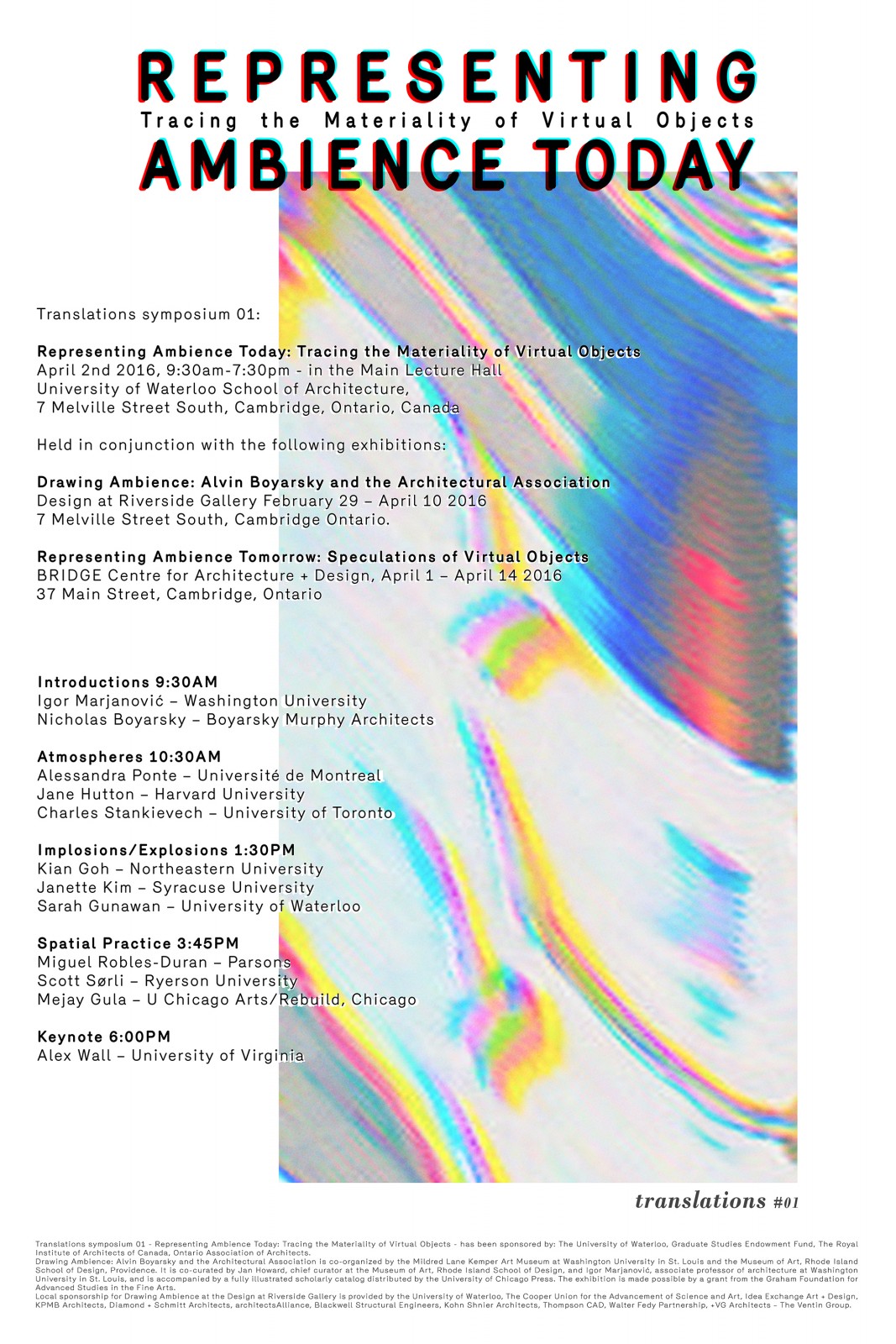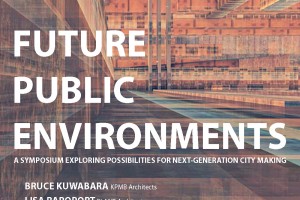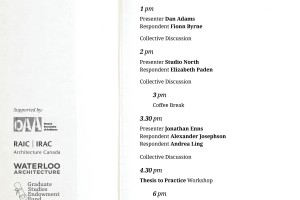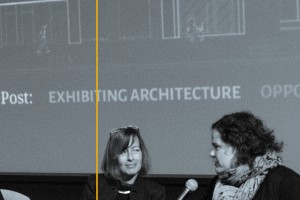
Translations Symposium 01
Representing Ambience Today: Tracing the Materiality of Virtual Objects
April 2nd 2016, 9:30am-7:30pm in the Main Lecture Hall
University of Waterloo School of Architecture,
7 Melville Street South, Cambridge, Ontario, Canada
http://translations.waterlooarchitecture.com
Held in conjunction with the following exhibitions:
Drawing Ambience: Alvin Boyarsky and the Architectural Association*
Design at Riverside Gallery February 29 – April 10 2016
7 Melville Street South, Cambridge Ontario.
Representing Ambience Tomorrow: Speculations of Virtual Objects
BRIDGE Centre for Architecture + Design, April 1 – April 14 2016
37 Main Street, Cambridge, Ontario
Representing Ambience Today is the first iteration of Translations, an annual symposium that explores opportunities to translate academic research in to practice. This iteration translates conceptual questions raised by the exhibition Drawing Ambience for the present. In conjunction with the symposium, a student-organized exhibition, Representing Ambience Tomorrow: Speculations of Virtual Objects, responds to the thematic issues of the symposium. All events are free and open to the public.
If asked to say in a single sentence and as few words as possible what… the 20th Century introduced into the history of civilization… the response would emerge with three criteria…: the practice of terrorism, the concept of product design and environmental thinking…. Taken together, all three mark an acceleration in “explication.” In other words: the revealing-inclusion of the background givens underlying manifest operations.
Peter Sloterdijk, Terror from the Air
In the years since the production of the drawings that make up the exhibition Drawing Ambience: Alvin Boyarsky and the Architectural Association, which spans the two decades of Boyarsky’s tenure as the Chairman of the Architectural Association (1971-1990), forms of representation have radically changed, but so too have the forms of ambience which architectural practice is called on to represent. Representing Ambience Today is a symposium that will investigate contemporary representations of architecture’s milieu or surroundings.
In the context of the exhibition, the word ambience comes from Boyarsky’s emphasis on “the ambience” of the Architectural Association itself, its culture of intense social and cultural exchange. In the 1960s the concept of ambience was also a central concern of the Situationist International. For Guy Debord and Constant Nieuwenhuys, ambience was the essence of unitary urbanism; ambience was the background condition of a given space, its affective reality, to be examined using techniques such as psychogeography and the dérive. Situationist concepts were brought to the Architectural Association by Rem Koolhaas and Bernard Tschumi, who arrived in 1969 and 1970 respectively, from Paris, where both experienced the upheavals of May 1968 firsthand. In the late 1990s, urban ambience arose again as an important question in architectural thought, through Koolhaas’ provocations about that object “formerly called the city”, in texts such as the “Generic City”, “Atlanta” and in his teaching research with the Harvard Project on the City. His writing contained echoes of Henri Lefebvre’s 1970 assertion that the reality of the contemporary city could not be seen, because of its transitional nature and therefore needed to be approached as a virtual – possible / impossible – object. If these diverse notions of ambience circulate in the Drawing Ambience exhibition, then the Representing Ambience Today symposium explores how architects and theorists have recently focused even more explicitly on architecture’s backgrounds.
Within the structure of this symposium the urban is understood as a mediating layer, bridging human (social/political) and non-human (atmospheric) backgrounds. Alongside a contemporary focus on the ambience of the urban, has come an interest in social conditions within contemporary architecture. From practices like Lacaton and Vassal to Assemble, a new interest has emerged in social formations and practices. At the same time, contemporary philosophy has discovered something that many architects have always known, that matter itself has agency and creates situations alongside and beyond human actions. The emergence of this ‘new materialism’ has paralleled the work of architects, from Peter Zumthor to Forensic Architecture, who have been working to explicate the material conditions of architectural production. Sloterdijk’s provocation on the novelty of the 20th Century, quoted above, was written at the dawn of the 21st. Today, architects and philosophers have finally noticed the ambience of matter, urbanization, and social practice and the explication of these background conditions has become a central concern of architectural theory and practice.
Symposium Schedule:
9:30am – Opening Orientations
Introductions: John McMinn, Adrian Blackwell, University of Waterloo
Introduction to Drawing Ambience: Igor Marjanović, Washington University in St. Louis
Respondent: Nicholas Boyarsky, Boyarsky Murphy Architects
10:30am – Atmospheres – the ambience of matter
Architecture has turned to focus more closely on the properties of matter, which are often dynamic, changeable and difficult to fix as an image. This has led designers and researchers to open up the black box of architectural materials, in order to understand their underlying physical characteristics, their toxicity or carbon and energy footprints, as well as the social and cultural forces that underlie their production and which accrue to them through use. Even materials that have traditionally appeared incidental to architecture – such as the air, or the waves that pass through it – have also appeared at the center of architectural investigations.
Speakers:
Alessandra Ponte – Université de Montréal
Jane Hutton – Harvard University
Charles Stankievech – University of Toronto
Moderator: Anne Bordeleau – University of Waterloo
Respondent: Dereck Revington – University of Waterloo
12:15 – Lunch Break at Bridge Storefront
1:30pm – Implosions / Explosions – urban ambience
Since the 1980s the focus of architecture has titled toward the urban and more recently the territorial scale. This shift has provoked new problems for design. At its most extreme, it has required us to think about urbanization as a planetary process, which includes not only dense centers of agglomeration, but also the resource peripheries, which fuel our cities. However, it is not only the scale of urbanization that has shifted, so too have the actants which need to be included in our understanding of the urban. Architects have begun to focus on urban conditions that they rarely considered in earlier projections of urban form, such as urban ecology and urban metabolism, including the cycles of non-human forms of life and energy.
Speakers:
Kian Goh – Northeastern University
Janette Kim – Syracuse University
Sarah Gunawan – University of Waterloo
Moderator: Val Rynnimeri – University of Waterloo
Respondent: Mona El Khafif – University of Waterloo
3:15 – Break
3:45pm – Spatial Practice – the ambience of social relations
The social relations that inhabit architecture are rarely the focus of architectural design and they are certainly much more difficult to represent than the materiality of architecture itself. In the 1970s these questions were an important counterculture within architectural thinking, but this focus receded in the 1980s under the pressure of post-modernism. Today the problem of spatial practice has returned through the influence of critical geography, and its critique of the austerity measures and militarization, which are part and parcel of the neoliberal political economy on which architectural production is based. In this context, architects are responding to contemporary social movements like Occupy and Black Lives Matter, in order to address existing spatial problems of segregation and economic polarization.
Speakers:
Miguel Robles-Duran – Parsons / The New School
Scott Sørli – Independent Research / ø-slash
Mejay Gula – University of Chicago Arts / Rebuild Foundation
Moderator: Lola Sheppard – University of Waterloo
Respondent: Marie-Paule Macdonald – University of Waterloo
5:30 – Break
6:00pm – Closing Orientations
Keynote: Alex Wall – University of Virginia
Keynote Moderator / Respondent: Ila Berman – University of Waterloo
These new representations of ambient conditions are foreshadowed in the exhibition Drawing Ambience: Alvin Boyarsky and the Architectural Association, but contemporary practices have also expanded beyond these speculative architectural representations of the 1970s and 1980s. The symposium strives to explore these emerging pathways.
Logistics:
The exhibitions Drawing Ambience (Design at Riverside Gallery, 7 Melville Street South, Cambridge).and Representing Ambience Tomorrow (BRIDGE Centre for Architecture + Design, 37 Main Street, Cambridge) will be available for viewing throughout the day of the symposium. The opening of the Representing Ambience Tomorrow exhibition will take place on Friday April 1st. All symposium participants are invited to attend. There will be a cash bar available for both the exhibition opening and a post symposium gathering at BRIDGE Centre for Architecture + Design, a student run gallery, a five minute walk from the Waterloo Architecture building.
During the Representing Ambience Today symposium, refreshments will be served between breaks in the Waterloo Architecture building.
Lunch and dinner will be available at BRIDGE Centre for Architecture + Design, and should be prepaid through the event registration page on our website – http://translations.waterlooarchitecture.com
Sponsors:
Translations symposium 01 – Representing Ambience Today: Tracing the Materiality of Virtual Objects – has been sponsored by: The University of Waterloo, Graduate Studies Endowment Fund, The Royal Institute of Architects of Canada, Ontario Association of Architects, Grand Valley Society of Architects, Society of Waterloo Architecture Graduates.
*Drawing Ambience: Alvin Boyarsky and the Architectural Association is co-organized by the Mildred Lane Kemper Art Museum at Washington University in St. Louis and the Museum of Art, Rhode Island School of Design, Providence. It is co-curated by Jan Howard, chief curator at the Museum of Art, Rhode Island School of Design, and Igor Marjanović, associate professor of architecture at Washington University in St. Louis, and is accompanied by a fully illustrated scholarly catalog distributed by the University of Chicago Press. The exhibition is made possible by a grant from the Graham Foundation for Advanced Studies in the Fine Arts.
Local sponsorship for Drawing Ambience at the Design at Riverside Gallery is provided by the University of Waterloo, The Cooper Union for the Advancement of Science and Art, Idea Exchange Art + Design, KPMB Architects, Diamond + Schmitt Architects, architectsAlliance, Blackwell Structural Engineers, Kohn Shnier Architects, Thompson CAD, Walter Fedy Partnership, +VG Architects – The Ventin Group.






Leave a Reply